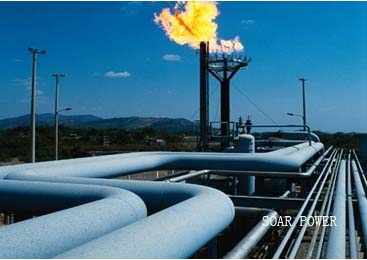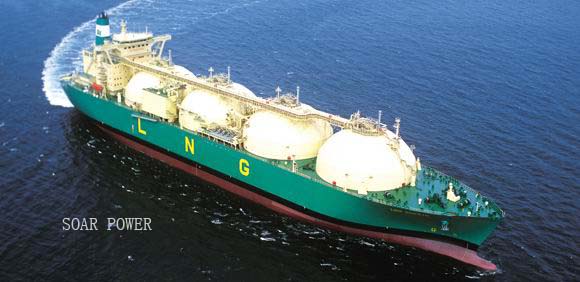Natural gas is a fossil fuel composed of mostly methane, and is one of the cleanest burning alternative fuels. According to the source of natural gas, it can be divided into two categories: conventional and unconventional. The former includes pipeline natural gas (PNG), liquefied natural gas (LNG) and compressed natural gas (CNG), as well as the latter can be classified as oilfield associated gas, colliery gas, shale gas, and combustible ice, etc. which can be used as fuel for power generation and vehicles.
Natural gas is obtained from a wide range of sources and may differ not only in composition and processing, but also in energy content. The main component is methane (CH4), It usually constitutes between 75-99%, but deviations are not unusual. Natural gas contains small amounts of ethane, propane, butane and ethylene.
Natural gas is commonly supplied via pipeline or a gas infrastructure, but thanks to recent developments it can be liquefied easily and economically. Consequently, it can be transported as LNG by vessels all over the world.

Pipeline Natural Gas |

Liquified Natural Gas |
|
Several common types of natural gas:
1. Pipeline natural gas (PNG) refers to the natural gas transported by natural gas pipeline, which is the main way to transport natural gas on land. Natural gas pipeline refers to the pipeline that transports natural gas (including oilfield associated gas) from the production site or processing plant to urban gas distribution center or industrial enterprise users, also known as gas transmission pipeline. Natural gas pipelines account for more than half of the world's total pipeline length.
2. Liquefied Natural Gas (LNG) is natural gas that is cooled down to -161 °C (-258 °F) to liquefy. The advantage of LNG is that its volume is 1/600th of its gaseous volume which makes it very attractive for transportation.
3. Coalbed methane (CBM), refers to hydrocarbon gases stored in coal seams which is mainly composed of methane, and adsorbed on the surface of coal matrix particles, and partially free in coal pore or dissolved in coal seam water. It is associated gas of coal mining and belongs to unconventional natural gas. The calorific value of one cubic meter pure coalbed methane is equivalent to 1.13 kg gasoline or 1.21 kg standard coal. Its calorific value is equal to that of natural gas. It can be mixed with natural gas and is an ideal fuel for power generation. Learn More ...
There are different types of natural gas depending on the composition. H-gas (high calorific gas) is gas with a high content of energy and methane. L-gas (low calorific gas) has a lower content of energy and methane but higher amounts of nitrogen and carbon dioxide. Of course, these types of natural gas have different characteristics in terms of combustion ( see the gas fuel specification below).
For use of natural gas in our engines, the gas must comply with the general applicable specifications for natural gas, the specific MDT requirements, be clean, dry and cooled (free of water, hydrocarbon condensate and oil) when fed to the engine.
If you are in doubt about your gas quality, do not hesitate to contact us. We can check your fuel and inform about the best suited our engine. |
| Appendix:Natural gas specifications |
|
Item
|
Unit
|
Properties
|
|
Calorific value (LHV), Min.
|
kJ/Nm³
|
32,400
|
|
Methane number
|
-
|
≥70
|
|
Hydrogen sulphide content (H2S)
|
mg/Nm³
|
5
|
|
Total sulphur content
|
mg/Nm³
|
30
|
|
Particle concentration, Max.
|
mg/Nm³
|
50
|
|
Particle size
|
µm
|
10
|
|
Total fluoride content
|
mg/Nm³
|
5
|
|
Total chlorine content
|
mg/Nm³
|
10
|
|
Note:
1. Nm³ corresponds to one cubic meter of gas at 0 °C and 101.32 kPa.
2. All data provided on this site is for information purposes only, explicitly non-binding and subject to changes without further notice |
|
|